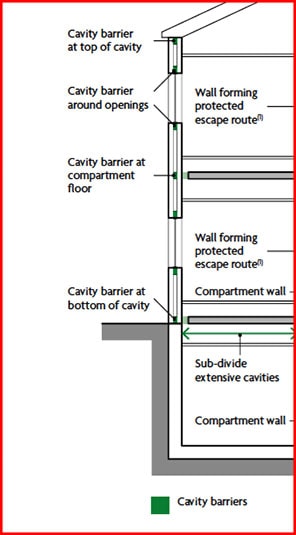BSA Fire Statement Submission – What You Need to Know
Following the Grenfell Tower tragedy, the new Building Safety Act requires the development of a fire safety statement for high-risk buildings at the planning stage. If you are the principal designer then it is your responsibility to start this “golden thread of information”. Read on to find out more …
In the independent Review of Building Regulations and Fire Safety by Dame Judith Hackitt her report recommended that “some minimum requirements around fire safety will need to be addressed when local planning authorities are determining planning applications and will require input from those with the relevant expertise.”
If you the architect or your organisation is the principal designer of a high risk building then you are responsible for this initial fire safety statement. You will need to put it together to get the design through planning gateway one before construction can begin.
Planning gateway one has two key elements:
- the developer must submit a fire statement setting out fire safety considerations specific to the development with a relevant application for planning permission
- it establishes the Health and Safety Executive as a statutory consultee for relevant planning applications
What is the Fire Statement?
According to the government guidelines, “It is the intention that the information provided within a fire statement is focused and concise, specific and relevant to the development, and proportionate to the scale, type, and complexity of the proposal. A fire statement will evidence that thinking on fire safety matters, as they relate to planning.”
The document includes:
- The site layout, plans and height
- The consultation undertaken about the development’s fire safety
- The person responsible for the statement and a demonstration of their competence
- The principles and approach to fire safety in the development
- How fire safety policies in relevant documents are taken into account
There is a statutory form to fill out and guidance notes about this are published by the government.
What About Approved Document B?
The specifics of fire safety in dwellings, including high risk buildings, are covered by Approved Document B of the building regulations.
Included within this document in section 10 are external surfaces, fire resistance, combustibility of external walls and cavity barriers.
The focus of this section is on materials (regulation 7) and resisting fire spread over external walls.
This is obviously very pertinent when we cast our minds back to the Grenfell Tower tragedy and the horrific images we saw on our TV screens.
Section 10.5 to 10.9 covers reaction to fire compliance and classifications to include specific material and product requirements. You should note that the material restrictions outlined for composite panels do not apply to masonry cavity walls.
It’s worth looking more closely at cavity barriers in fire safety. For dwellings these are detailed in B3 section 5 which includes their placement and purpose and B3 section 8 which focuses on their role in preventing fire spread in apartments and flats. They are placed around fire separating elements in a building and also protect escape routes.
The diagram below taken from approved document B shows where you should place them to satisfy the regulations.

How do you know products are safe?
One of the big problems from Grenfell is the complete lack of accountability for the fire and how it spread so rapidly.
In response the government has formed the National Regulator for Construction Products (NRCP) to ensure that proper information is available and that it is relevant and accurate.
Its remit includes market surveillance and oversight and a national complaints system supporting trading standards. It will lead and co-ordinate enforcement, carry out its own product testing to investigate non-compliance and provide advice and support to the industry.
In short, it will reassure architects and specifiers that products are safe and fit for purpose.
Fire classification of products
Delving deeper, BS EN 13501 deals with the fire classification of construction products. It deals with how fire behaves while testing a product for flame and combustibility (rating from A – F), the generation of smoke and if the product produces droplets that can help spread the fire further.
Some products, such as masonry are inherently safe with a top rating of A1. This is not surprising when you consider that the production of clay bricks involves firing them to 900oC. It means that it offers a well proven solution to prevent combustion and the spread of flame.
While masonry has been around for centuries it is still relevant and even more so for high-risk buildings using Modern Methods of Construction.
If you are the principal designer then you must generate a fire safety statement as part of the planning process. Our RIBA approved CPD seminar “Building Safety Act 2022” covers what you need to know plus some details about the Fire Statement Submission and product safety. You can register for an online or on-site course below.
BSA Fire Statement
This blog contains some of the content from our RIBA approved CPD seminar about the Building Safety Act. To test your understanding and receive a certificate simply answer the following questions. In each case only one answer is correct.
Remember our RIBA approved seminar about the building Safety Act explains what your responsibilities are as the principal designer including what you need to know about the fire Statement submission. To sign up for this CPD click here.
